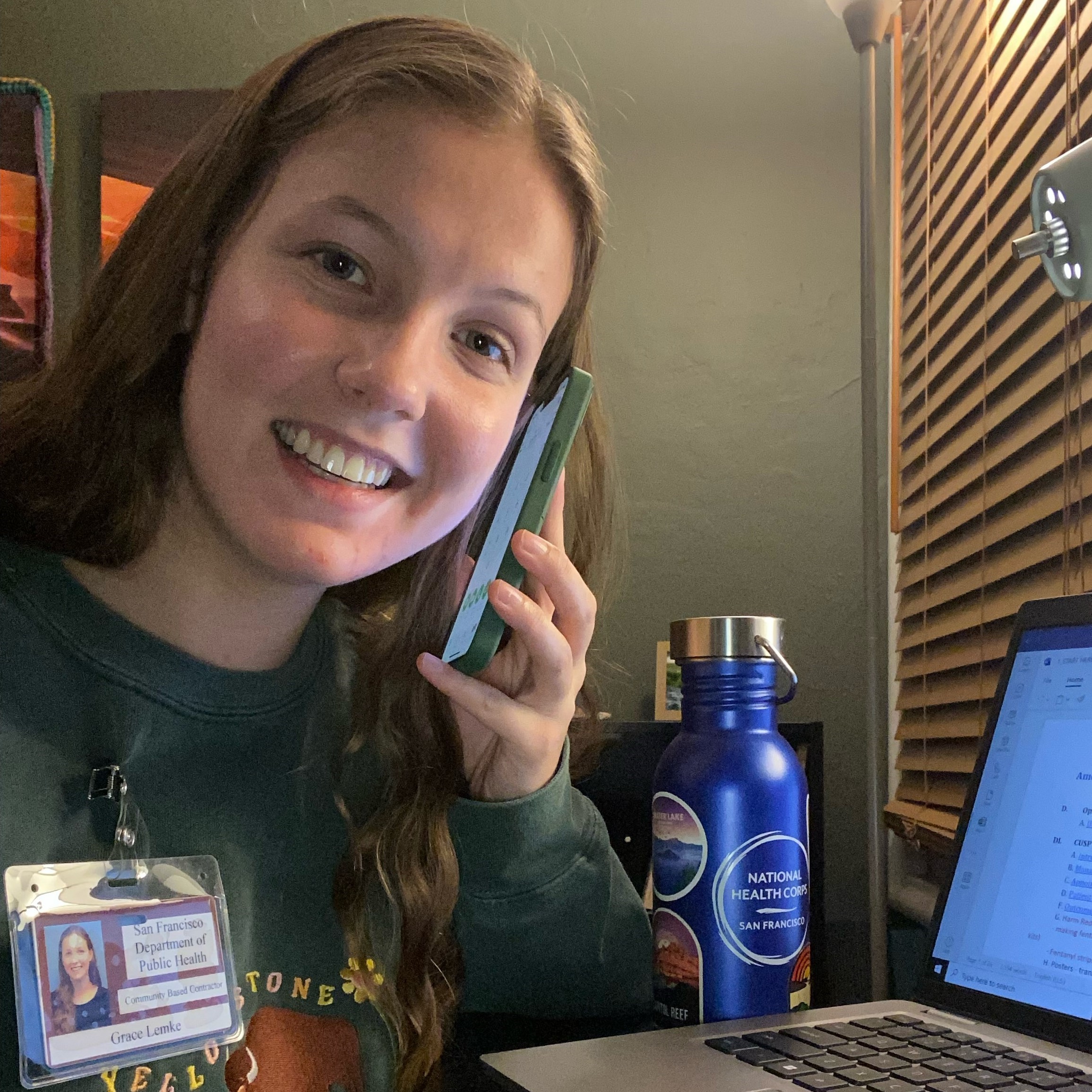Lessons from Service: Harm Reduction Saves Lives
Hi everyone! I’m Grace (she/her) and I’m from Pennsylvania. I serve with the San Francisco Department of Public Health’s Value-Based Care Team as an Opioid-Safety Coordinator. My day-to-day involves serving as a patient navigator for a few substance-use clinics in the DPH system and contributing to quality improvement projects addressing the opioid epidemic in Primary Care. The opioid epidemic is an ongoing problem in San Francisco, and across the United States, exacerbated by illicit fentanyl entering the drug supply with 75% of overdose deaths in San Francisco in 2021 resulting from fentanyl use.
 Evidently, solutions are needed to address the opioid epidemic and the city of San Francisco has a variety of substance-use services ranging from Street Medicine for people who are unhoused, to mental and behavioral health services, to primary care clinics. However, if there’s one thing I’ve learned from my service so far, it’s that no program addressing substance use is successful without a harm reduction lens. So, what is harm reduction? Harm reduction is a practical and life-saving approach that uses strategies to reduce the negative consequences of substance use (particularly overdose deaths) rather than altogether stop substance use (also known as abstinence), which is not always a feasible or helpful goal to push onto patients.
Evidently, solutions are needed to address the opioid epidemic and the city of San Francisco has a variety of substance-use services ranging from Street Medicine for people who are unhoused, to mental and behavioral health services, to primary care clinics. However, if there’s one thing I’ve learned from my service so far, it’s that no program addressing substance use is successful without a harm reduction lens. So, what is harm reduction? Harm reduction is a practical and life-saving approach that uses strategies to reduce the negative consequences of substance use (particularly overdose deaths) rather than altogether stop substance use (also known as abstinence), which is not always a feasible or helpful goal to push onto patients.
Harm reduction practices can involve increased access to Naloxone/Narcan (a life-saving medication that reverses opioid overdose), use of de-stigmatizing language to encourage patients to speak honestly with providers about substance use, and more. Harm reduction is patient-centered, non-judgmental, and uses techniques like motivational interviewing to help patients meet their own goals regarding substance use. This is markedly different from the more limited, traditional approach which advocates for complete abstinence as the only marker of success. By approaching people who use drugs from a harm reduction standpoint, we decrease the amount of stigma they experience and therefore reduce barriers to accessing care. Ultimately, people who use drugs are exactly that - people - and they deserve respect, autonomy, and, when they seek it out, help to meet their goals regarding substance use.
Early on in my service, a mental health provider at one of the SFDPH Primary Care Clinics gave me a critical piece of insight. He expressed that, “the problem in San Francisco is that too many residents look at unhoused people in tents, or people injecting drugs on the sidewalk, and think “why are they in my neighborhood?” instead of “could my neighbor use help?” I couldn’t think of a better way to express what I’m learning and seeing while serving patients with substance use disorders. I’ve learned so much about a community of patients who are too often judged and criminalized, and perhaps most importantly I’ve learned that harm reduction is an effective, compassionate, patient-centered strategy that has the potential to improve outcomes for the opioid epidemic, and save lives, in San Francisco and across the United States.
